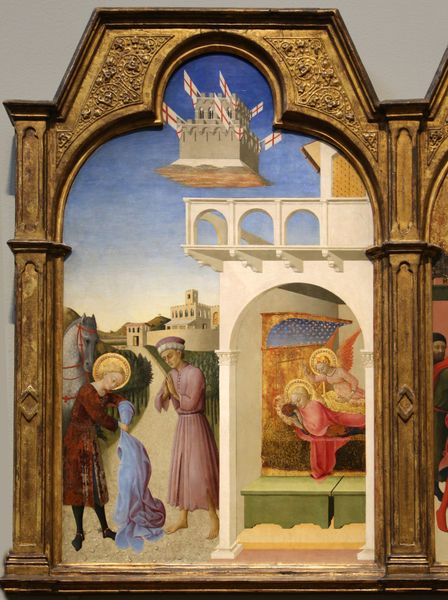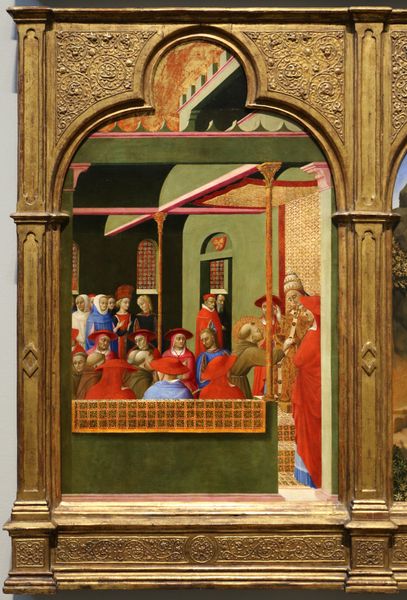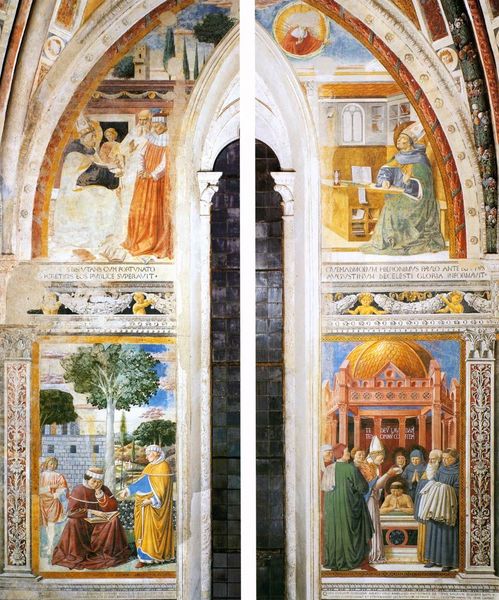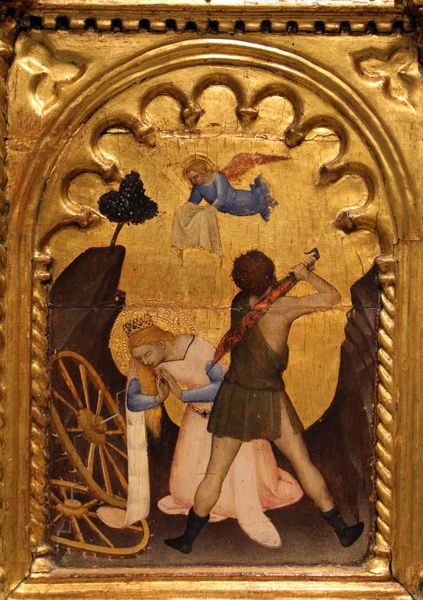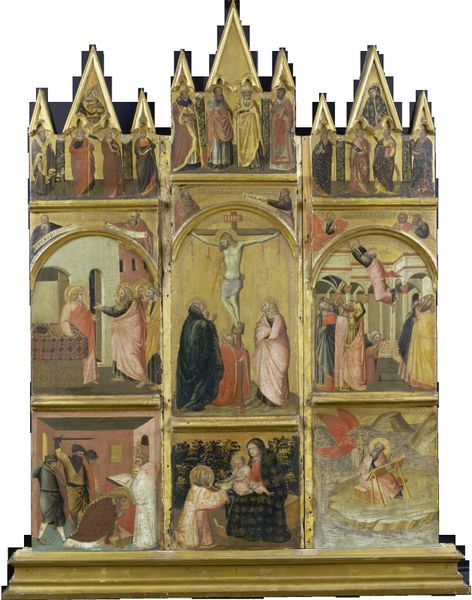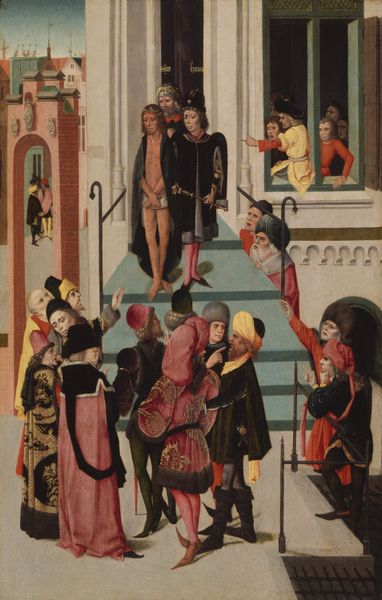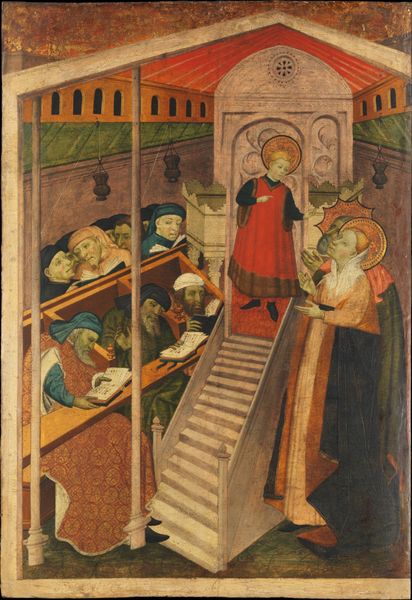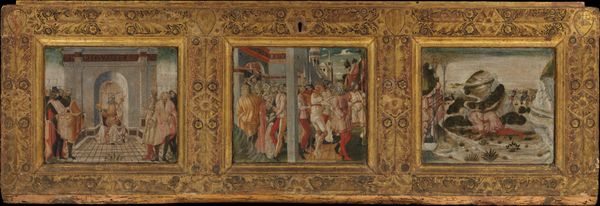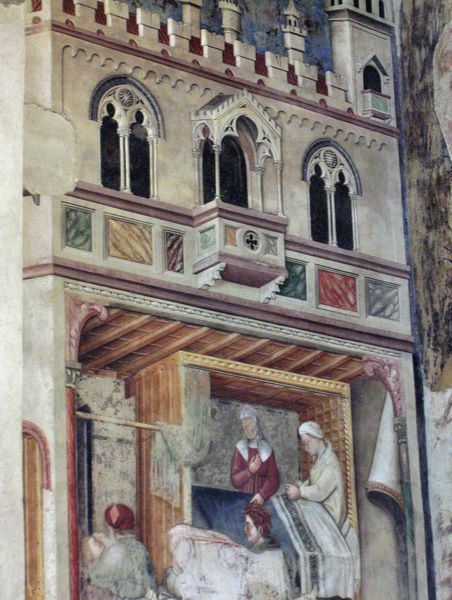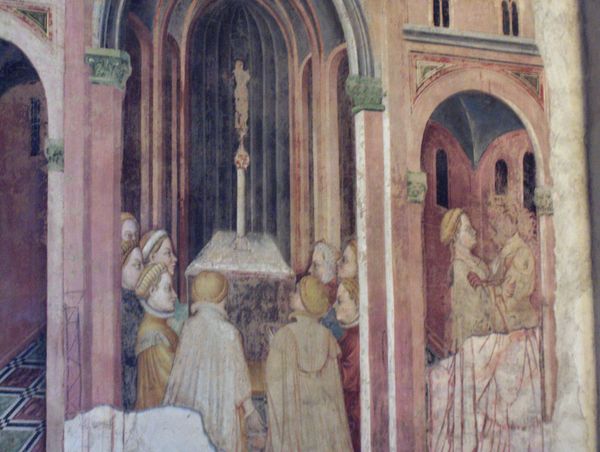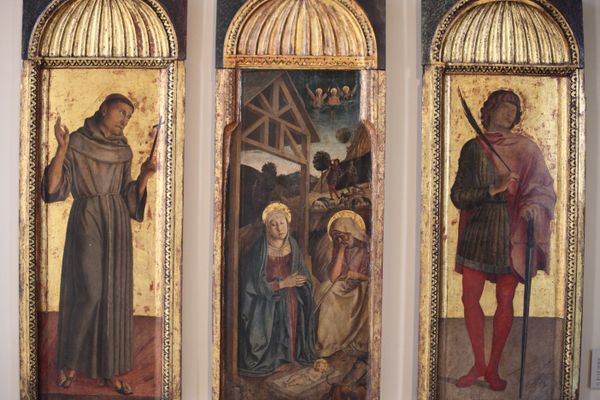
panel, tempera, painting
#
panel
#
narrative-art
#
tempera
#
painting
#
figuration
#
history-painting
#
italian-renaissance
#
early-renaissance
Copyright: Public domain
Editor: This is a detail from Il Sassetta’s "Polittico di Sansepolcro," a tempera on panel piece from 1444, and there is something almost dreamlike in how the space and figures are arranged. What strikes you when you look at this work? Curator: I see a carefully constructed visual argument deeply rooted in the social and religious currents of its time. Consider how this polyptych originally functioned – not as isolated art, but as a powerful visual statement within a specific institutional context, namely, a church in Sansepolcro. How does that knowledge change your interpretation? Editor: That does change it. Knowing it was created for a church makes me look closer at the figures; I recognize St. Francis, but what about the others? Curator: Exactly. Note how Sassetta uses distinct visual cues, like clothing and halos, to establish hierarchies and identities. These weren't just aesthetic choices; they reinforced the Church's social and spiritual authority. Notice the symmetry in the composition and the architectural space, does that communicate anything to you? Editor: It feels ordered, controlled almost. As if to imply the church is the physical embodiment of that divine order here on earth. But were there any challenges in getting such imagery approved and displayed? Curator: Always. Even during the Renaissance, religious art was subject to scrutiny and had to adhere to certain doctrines. Patrons, such as wealthy families or religious orders, also influenced the artwork's subject matter, reflecting their social ambitions and religious beliefs. Think about how that plays into its creation and later, how the piece reflects the institution's cultural reach and political standing. Editor: It's fascinating how a single artwork can reveal so much about the society that created it. Now I realize I was only looking at the surface before. Curator: Precisely! Art acts as a lens, allowing us to understand better the intricate dynamics of power, belief, and social structures in any given time.
Comments
No comments
Be the first to comment and join the conversation on the ultimate creative platform.
